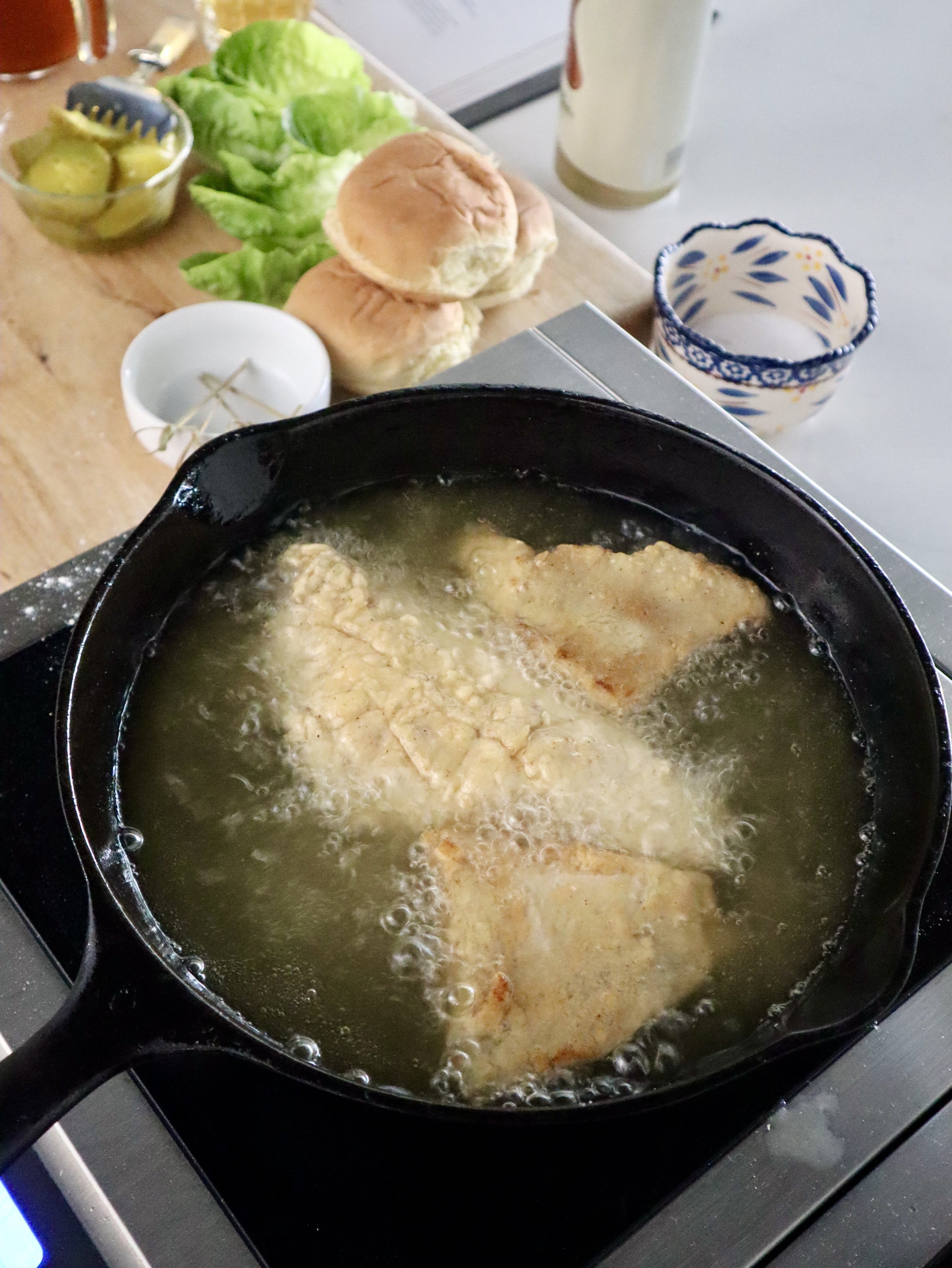Introduction to Induction
Induction cooking is having a moment. When we set up our Holly Hill cooking studio a couple of years ago, we were after maximum flexibility at minimum cost, and a pair of induction burners helped fill the bill. They were lightweight, low-profile and portable, and didn’t require special installation or an exhaust hood. Best of all, they were compatible with our beloved cast iron skillets.
What they did require was a bit of a learning curve. And now, after a hundred classes and almost as many recipe shoots, we’re ready to share what we’ve learned.
Induction burners work by transferring heat from a copper coil under the surface to your pot through an electromagnetic process, turning your cooking vessel into its own heat source. It’s a very efficient method because so little heat is lost. Which is great on a hot summer day when you’re trying to get dinner on the table without sending the air conditioning into overdrive, or yourself into a meltdown.
According to Energy Star statistics, gas stoves transfer energy at an efficiency rate of 32%, electric cooktops transfer energy at an efficiency rate of 75% to 80%, while the energy-transfer efficiency rate of induction burners and cooktops tops 85%.
The downside is that you’ll need induction-compatible pots and pans – basically any that are highly magnetic (why we carried magnets on our thrifting forays.) Copper, ceramic, glass, aluminum, and non-magnetic stainless steel, including 18/10 and 18/8, won’t work.
Cast iron, enameled cast iron, carbon steel and fully clad cookware will all work. That’s where the magnet comes in handy. If it sticks strongly to the bottom of the piece, you’re good. If it’s just a light attraction, swipe left and move on.
Of course, this is a lot easier when you’re buying brand new as most manufacturers now label their induction-friendly cookware. If you’re thrifting for cast iron, remember that highly collectible older skillets often have heat rings, which is problematic because the surface contact is reduced. They may still work but not as well; see below.
Induction burners are only effective when the bottom of the pan is in direct contact with the burner; we generated lots of annoying beeps whenever we picked up a skillet to toss its contents. And spent a lot of time fiddling with the controls – which offer a choice of temperature or wattage – until figuring them out.
The temperature setting regulates the temperature at the base of the burner and will cycle on and off as needed. It’s great for holding stocks at a simmer, keeping melted butter warm, making candy, or deep-frying. When we want to rev up the power to sear a steak, or bring water to a fast boil, we turn to the wattage setting.
Among the upsides –
There’s no open flame or direct heat with induction so it’s less likely (but not impossible!) you’ll burn yourself or something else.
Induction burners heat up fast and are great at holding a precise temperature.
Many induction cooktops, ranges and other equipment are eligible for rebates.
You can use induction anywhere there’s electricity available.
And a few downsides –
Don’t leave a dry pan on a live burner for more than a minute or two; we learned this lesson the hard way when we cracked a vintage cast iron skillet.
Stir-frying and other wok cooking can be a challenge due to the limited surface area at the bottom of the pan, where all the action takes place.
Similarly, induction works best when the bottom of your pan aligns with the circumference of the induction coil.
Temperature ranges on less expensive burners are somewhat limited; this can be irritating if you’re used to cooking with gas.
Bottom line –
Induction cooking is the next wave of energy-efficient cooking; rebates are available if you’re doing a kitchen upgrade, and the new cooktops offer unlimited flexibility. Portable burners like ours can be used anywhere there’s an electrical outlet. They don’t require any installation, are handy for cooking in front of an audience, and make a great warm-weather alternative to lighting a grill. Induction may not be ready for a high-volume commercial kitchen (yet) but it’s a welcome (and increasingly affordable) option for the rest of us.
Related Content
Buffalo Catfish Sliders
Put that cast iron and burner to work with our Buffalo Catfish Sliders, a popular item on our Smithtown Seafood menu but easy to make at home, too. Our recipe makes plenty of Buffalo sauce, it's just a tasty bonus!
© 2025, Holly Hill Inn/Ilex Summit, LLC and its affiliates, All Rights Reserved








